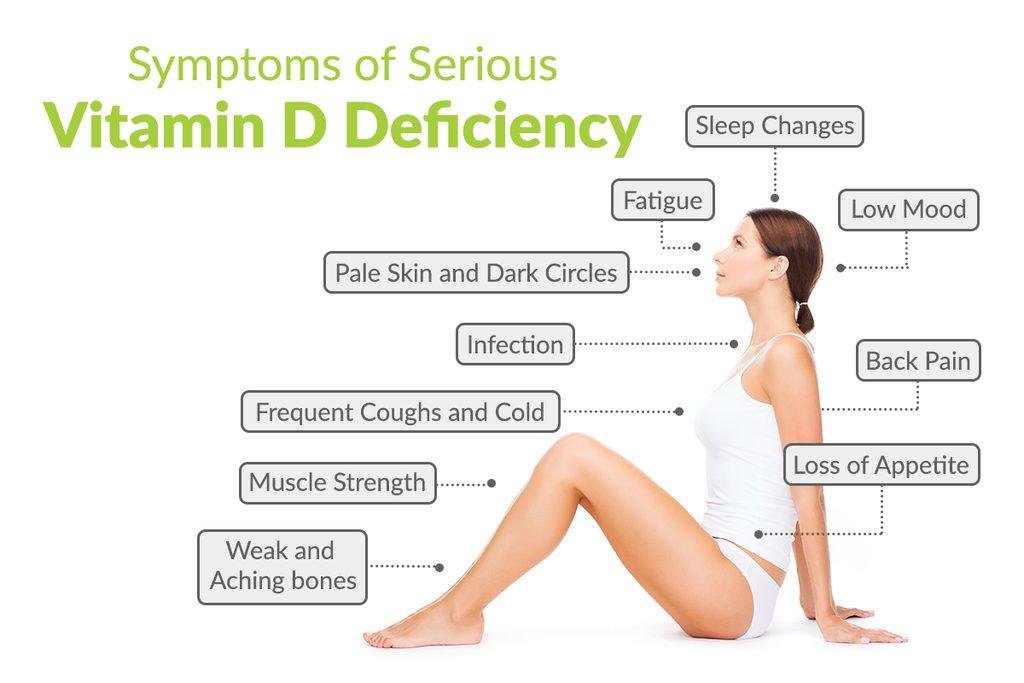In the realm of essential vitamins, few hold as much significance as Vitamin D, often referred to as the “sunshine vitamin,” it plays a crucial role in various bodily functions, including bone health, immune system support, and mood regulation. However, a significant portion of the population worldwide suffers from Vitamin D deficiency, which can lead to a range of health issues.
In this blog post, we will delve into the causes, symptoms, and strategies to prevent and recover from Vitamin D deficiency.
Understanding Vitamin D Deficiency
Vitamin D deficiency occurs when the body lacks an adequate amount of these essential nutrients. The primary source of Vitamin D is sunlight exposure, which triggers its synthesis in the skin. Additionally, certain foods and supplements can provide Vitamin D, but inadequate intake can lead to deficiency. Factors such as limited sun exposure, sunscreen use, darker skin pigmentation, and certain medical conditions can contribute to deficiency.
Causes of vitamin D deficiency
Lack of Sunlight Exposure: Vitamin D is often referred to as the “sunshine vitamin” because the body can produce it when the skin is exposed to sunlight. People who live in regions with limited sunlight, spend most of their time indoors, or use excessive sunscreen are at a higher risk of deficiency.
Dietary Insufficiency: Vitamin D is found naturally in a few foods, such as fatty fish (salmon, mackerel), egg yolks, and some fortified foods (e.g., fortified milk, cereal). If your diet lacks these sources, you may not be getting enough vitamin D.
Dark Skin Pigmentation: Melanin, the pigment responsible for skin color, can reduce the skin’s ability to produce vitamin D in response to sunlight exposure. People with darker skin are therefore at a higher risk of deficiency, especially if they live in areas with limited sunlight.
Age: As people age, their skin’s ability to synthesize vitamin D decreases. Additionally, older individuals might spend less time outdoors, further contributing to deficiency.
Geographical Location: People who live farther away from the equator receive less direct sunlight, especially during certain seasons. This can lead to a higher risk of deficiency.
Obesity: Vitamin D is a fat-soluble vitamin, which means it is stored in fat tissue. Individuals with higher amounts of body fat might require more vitamin D to maintain sufficient levels.
Malabsorption Issues: Certain medical conditions, such as celiac disease, inflammatory bowel disease, and Crohn’s disease, can affect the body’s ability to absorb nutrients, including vitamin D.
Kidney Problems: The active form of vitamin D is produced in the kidneys. Individuals with kidney disorders might have difficulty converting vitamin D into its active form, leading to deficiency.
Medications: Some medications, like certain anticonvulsants, glucocorticoids, and weight loss drugs, can interfere with vitamin D metabolism and absorption.
Limited Breastfeeding: Infants who are exclusively breastfed are at a higher risk of vitamin D deficiency because breast milk is generally low in vitamin D. Pediatricians might recommend supplements for breastfed babies.
Medical Conditions: Certain medical conditions, such as liver disease and certain genetic disorders, can impact the body’s ability to process and utilize vitamin D.
Signs and symptoms of vitamin D deficiency
Recognizing the symptoms of Vitamin D deficiency is crucial for early intervention. Common symptoms include…
1. Fatigue
2. Muscle weakness
3. Bone pain
4. Frequent infections
4. Low mood
5. Impaired wound healing.
6. Anorexia (Loss of Appetite)
7. Sleeplessness (Insomnia)

In severe cases, deficiency can lead to conditions like osteoporosis and increased susceptibility to chronic diseases.
Vitamin D Deficiency Preventive Measures
Get Sun Smart: Regular, moderate sun exposure is one of the best ways to prevent Vitamin D deficiency. Aim for about 10 to 30 minutes of sun exposure on the arms, legs, or face a few times a week, depending on factors like skin tone, location, and time of day. However, balance is key; excessive sun exposure can increase the risk of skin damage and skin cancer.
Dietary Sources: Incorporating Vitamin D-rich foods into your diet can help prevent deficiency. Fatty fish like salmon and mackerel, fortified dairy products, eggs, and mushrooms are natural sources of Vitamin D. Check food labels for added Vitamin D content in products like milk and cereals.
Supplements: If sunlight exposure and dietary changes aren’t sufficient, Vitamin D supplements can be a valuable tool. Consult a healthcare professional before starting any supplementation regimen, as excessive intake can have adverse effects. They will help determine the appropriate dosage based on your individual needs.
Certainly, here are some dietary sources of Vitamin D:
Fatty Fish: Fatty fish like salmon, mackerel, trout, and sardines are excellent sources of Vitamin D. They provide not only a good dose of the vitamin but also healthy omega-3 fatty acids.
Cod Liver Oil: This oil is extracted from the liver of cod fish and is one of the most concentrated sources of Vitamin D.
Egg Yolks: Egg yolks contain small amounts of Vitamin D. However, keep in mind that the vitamin is primarily found in the yolk, so choosing whole eggs is important.
Mushrooms: Some types of mushrooms, such as shiitake and maitake, can produce Vitamin D when exposed to sunlight. However, the amount can vary based on how they were grown.
Fortified Foods: Many food products are fortified with Vitamin D to help people meet their recommended intake. These include fortified dairy products (milk, yogurt, cheese), orange juice, cereals, and plant-based milk alternatives like almond milk and soy milk.
Beef Liver: Beef liver contains Vitamin D, but it should be consumed in moderation due to its high vitamin A content.
Cheese: Some types of cheese, like Swiss and cheddar, contain small amounts of Vitamin D.
Tofu: Certain brands of tofu are fortified with Vitamin D, making it a good option for those following a vegetarian or vegan diet.
It’s worth noting that while these foods can contribute to your Vitamin D intake, sunlight exposure remains one of the most effective ways to ensure adequate levels of vitamin D.
How To recover from vitamin D deficiency?
Recovering from vitamin D deficiency involves a combination of dietary changes, sunlight exposure, and, in some cases, supplements. Here are some steps you can take to address vitamin D deficiency:
Sunlight Exposure: Vitamin D is often referred to as the “sunshine vitamin” because your skin produces it when exposed to sunlight. Spend some time outdoors each day, especially during the early morning or late afternoon when the sun’s rays are less intense. Aim for around 10-30 minutes of sun exposure several times a week, depending on your skin type and location.
Dietary Sources: Include foods rich in vitamin D in your diet. Fatty fish like salmon, mackerel, and tuna are excellent sources. Other sources include fortified dairy products, fortified plant-based milk alternatives, egg yolks, and mushrooms.
Supplements: If your deficiency is severe or your doctor recommends it, consider taking vitamin D supplements. These are available in various forms, such as vitamin D2 and vitamin D3. Vitamin D3 is usually more effective at raising blood levels. Consult a healthcare professional before starting any supplementation regimen.
Consult a Healthcare Professional: If you suspect you have a vitamin D deficiency, it’s important to get a blood test to determine your levels accurately. Your healthcare provider can recommend the appropriate treatment plan based on your test results, health status, and any underlying medical conditions.
Maintain a Balanced Diet: In addition to vitamin D, ensure that you’re consuming a well-balanced diet rich in other essential nutrients. This will contribute to overall health and support your body’s ability to absorb and utilize vitamin D effectively.
Manage Underlying Conditions: Certain medical conditions, such as celiac disease, Crohn’s disease, and kidney disorders, can interfere with vitamin D absorption. Managing these conditions effectively can contribute to improved vitamin D levels.
Lifestyle Changes: Maintain a healthy lifestyle that includes regular physical activity and a balanced diet. These factors can support overall health, including vitamin D status.
Regular Check-ups: After implementing changes to address your deficiency, schedule regular follow-up visits with your healthcare provider to monitor your progress. They can help you adjust your approach as needed.
Vitamin D deficiency is a common and often overlooked health concern that can have a significant impact on overall well-being. With proper knowledge and action, it is possible to prevent and recover from Vitamin D deficiency. Incorporating moderate sun exposure, consuming Vitamin D-rich foods, and, if necessary, using supplements under medical guidance, can help maintain optimal Vitamin D levels.



